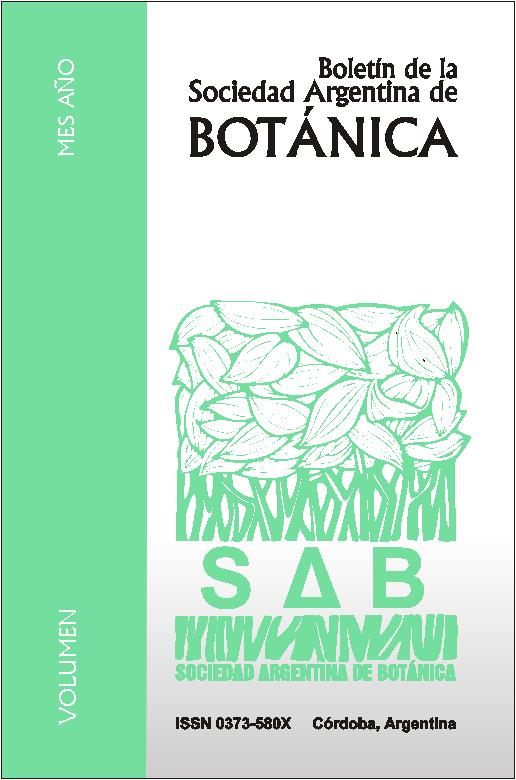Fern (Monilophyta) and lycophyte spores present in the National Park El Palmar (Entre Rios, Argentina).
DOI:
https://doi.org/10.31055/1851.2372.v51.n2.14843Keywords:
Spores, helechos, licofitas, morphology, diversity, ecology, distribution.Abstract
Fern (Monilophyta) and lycophyte spores present in the National Park El Palmar (Entre Rios, Argentina). Spore morphology of twelve species of ferns (monilophytes) and lycophytes collected between 2011 and 2014 (Adiantopsis chlorophylla (Swartz) Fée, Adiantum raddianum C. Presl., Anemia tomentosa (Savigny) Sw. var. tomentosa, Asplenium ulbrichtii Rosenst., Doryopteris concolor (Langsd. & Fisch.) Kuhn, Equisetum giganteum L., Microgramma x mortoniana De la Sota, Nephrolepis cordifolia (L.) C. Presl, Pleopeltis pleopeltifolia (Raddi) Alston, Pleopeltis minima (Bory) Prado & Hirai, Rumohra adiantiformis (G. Forst.) Ching, Selaginella sellowii Hieronymus) in the El Palmar National Park are analysed. Trilete and monolete and one monoporate spores are described and illustrated with LM (some complemented with SEM and fluorescence´s pictures). Morphological variations observed into each species of several taxa are documented. Information on the distribution of species within the park is provided, where A. clorophylla is the dominant terrestrial species in grassland and palm areas whilst, M. x mortoniana and P. pleopeltifolia are epiphytes in the palm Butia yatay (Mart.) Becc. (palm areas)and in some tree species in gallery forests. Nephrolepis cordifolia, Pleopeltis pleopeltifolia and Rumohra adiantiformis are added as new records for the Entre Ríos Province, which are not documented in the database of the Flora of the Southern Hemisphere. Seven new records are incorporated to the Arroyo El Palmar basin (18 species in total) and six species to the PNEP (15 species). The risk analysis based on the categories proposed by PlanEar indicates that the documented ferns are abundant in their places of origin and have broad geographical distributions in more than one of the phytogeographic units in the country, therefore they are not in risk.
Downloads
Downloads
Published
How to Cite
Issue
Section
License
Provides immediate and free OPEN ACCESS to its content under the principle of making research freely available to the public, which fosters a greater exchange of global knowledge, allowing authors to maintain their copyright without restrictions.
Material published in Bol. Soc. Argent. Bot. is distributed under a Creative Commons Attribution-NonCommercial-ShareAlike 4.0 International license.









